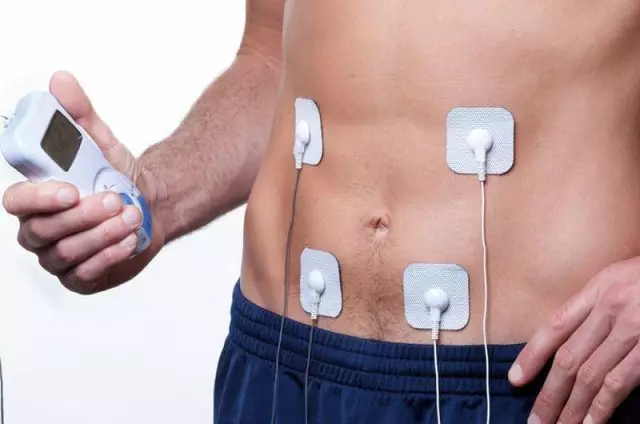- Author Curtis Blomfield [email protected].
- Public 2023-12-16 20:44.
- Last modified 2025-01-23 17:01.
The human body is an amazing mechanism that can remember different sensations and activate them at one time or another in time or life. It is not for nothing that many people fall ill from psychosomatic diseases, not realizing that they themselves invented all this, but there is no illness as such. But this article will not focus on human diseases and psychosomatics, but on sports and, in particular, what muscle memory is. And also about its influence on human life.

Definition of muscle memory
So what is it? Muscle memory is the ability of the body and the body to remember the muscle tone previously gained during training and, after a long break, to restore it as soon as possible. Many famous athletes note that, abandoning training for a long time, they quickly achieved the desired results, starting the same exercises again. By itself, human muscle memory is not just an abstract concept, but an effect of the body studied by scientists and psychologists.

A bit of history
This phenomenon has been studied by many scientists. A group led by Norwegian professor Christian Gundersen(University of Oslo) proved that during training, the nuclei in the muscles begin to divide and produce substances such as actin and myosin. The fusion of actin and myosin results in actomyosin, which is the basis for muscle mass. That is, the more nuclei that are produced during microtrauma, the greater the thickness of the muscles. The nuclei are the basis of muscle memory. Thus, after a long break in training, muscle mass decreases, but the nuclei remain, and when training is resumed, the muscles return to their previous state much faster. Also in the works of Gundersen it is noted that doping contributes to the production of nuclei in the human body. That is, when throwing workouts, an athlete can restore the entire mass without doping in a few weeks. This means that the effect of steroids is permanent, not temporary. According to the professor himself, the nuclei accumulated on doping can be stored in the human body for up to 10 years. But still, we must not forget that the harm from steroids persists, no matter what effect they give.
About proper nutrition
Of course, all the products that affect the improvement of muscle mass cannot be listed, but we will not talk about them, but about those that should be avoided, since they negatively affect muscle growth, therefore, do not allow nuclei to divide and thus negatively affecting muscle memory. There are six of these products:
- Alcohol.
- Chocolate.
- Cake and cakes.
- Fish caviar.
- Stash.
- Liver.
These products contain a huge amount of cholesterol and inhibit the growth of muscletissue, and also prevent the nuclei from dividing, the very basis of muscle mass.

Muscle memory in sports and life
Besides sports, there are several other areas of study of muscle memory. So, for example, the German scientist Reich proved his theory of the muscular shell. In it, he proved that muscles are a psychological shell. For example, if a person is constantly scolded and oppressed, his muscle groups begin to shrink, he becomes stooped and, with his head bowed, begins to constantly look at the ground. Why does this text describe the psychological aspect? Due to certain conditions, such as depression and fear, the muscles contract and produce substances that slow down growth, but at the same time human activity increases, and this can be used to your advantage. If a person begins to exercise physically, substances that negatively affect the body come out with sweat. Let the muscle mass not be gained, but nuclear fission is still going on. How to deal with the psychological shell so that negative elements are not produced? Every time when any problems begin, you need to catch the state and try to resist it, realizing that this is just a part of the troubles that you can easily survive. By the way, as practice shows, muscle memory benefits not only quick recovery during resumed workouts. It has also been proven that the muscles and joints of those who have trained earlier and beginners again hurt much less, such people almost do not experience fatigue after the same workouts than those who are engaged infor the first time. It is no secret that with age, the nuclei in the human body begin to be produced less and less. But, as proven by scientists, the resumption of exercise only contributes to their division. Therefore, breaks in training are very important and even necessary. Studies show that the rest period should last about a month.

Development of muscle memory at the physical level
To develop muscle memory, you need to train your body according to certain programs that fitness trainers and instructors make up. This can be learned by reading books on these topics, watching exercise videos, or hiring a personal trainer, which is more expensive but better for the body. Muscle memory in bodybuilding should only be developed during workouts designed by instructors. In this case, you should not skimp.

Muscle memory: how to develop on a psychological level
What does it mean to develop muscle memory on a psychological level? Rather, these workouts are auxiliary in order to achieve the desired result faster. Such development is absolutely not effective without physical exercises. As such, there are few psychological trainings, and they seem insignificant in appearance. So it is, but with intensive training, they begin to have significant weight. They are in the nature of self-hypnosis. So, there are two ways, they can be combined:
- Regulation of sleep. Going to bed, you need to imagine your physical body as you would like to see it. At the same time, it is necessarywake up 2-3 times a night and, falling back to sleep, imagine the body the way you want it to be.
- Imagine a hot ball in your hands, feel it and roll it over your palms and all parts of your body. For example, from the palm to the elbow, from the elbow to the shoulder, from the shoulder to the other shoulder and back. Then imagine that this ball is moving towards the throat. Then you need to sharply "drop" it to the solar plexus, to the hip part of the body, and then to the legs. Repeat this exercise about five times and preferably before going to bed. It helps the athlete "punch" new pathways to the nerve endings.






